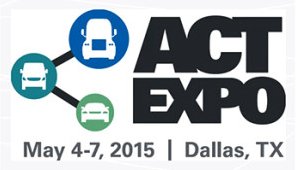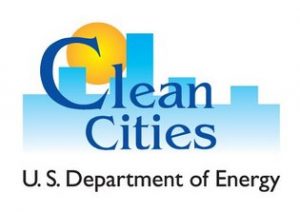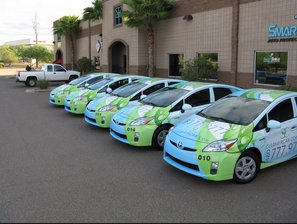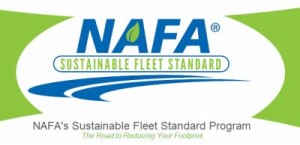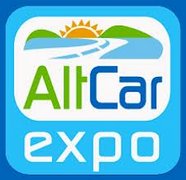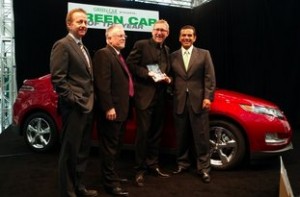 The Trump administration is keeping the president’s campaign promises supporting fossil fuels and pushing back on clean energy and efficient, clean transport. The State Department’s approval of the Keystone XL pipeline last week raised hackles further for many. Low-to-moderate gasoline and diesel prices aren’t helping make the business case for clean fuel and technologies, either.
The Trump administration is keeping the president’s campaign promises supporting fossil fuels and pushing back on clean energy and efficient, clean transport. The State Department’s approval of the Keystone XL pipeline last week raised hackles further for many. Low-to-moderate gasoline and diesel prices aren’t helping make the business case for clean fuel and technologies, either.
Breakthroughs in vehicle fuel efficiency and emissions reductions, clean fuel infrastructure, battery range, renewables, and electrified vehicles sales, are helping solidify the business case for policy and funding support; but, it isn’t the right time to gain broader support.
Fleet operators and suppliers attending the Work Truck Show and Green Truck Summit recently in Indianapolis reported on mixed results for sales. Interest in alternative fuel trucks rose from 2011 through 2013, when fuel prices approached $4 a gallon nationally, but has stayed down since then. Customers are harder to see with payback on the investment taking longer. Perception of things changing in Washington also played into the mood.
Some companies and fleets had good news to report. California-based Motiv Power Systems has been seeing an uptick for electric delivery trucks and school buses built on a Ford truck chassis. State-based incentive programs are taking the pressure off likely cuts in federal subsidies, the company said. California continues to be strong, and the New York and Chicago metro areas have paid off with similar purchase incentive programs in place. AmeriPride Services, a linen and uniform supply company, will bring 30 Motiv trucks to its fleet.
Daimler AG’s Mitsubishi Fuso division said it will bring a new line of electric work trucks to North America this year. A lease program will be offered for its eCanter medium-duty electric truck. The company said it will also rollout a second generation model within two years. Fuso forecasts growing market demand for urban electric trucks as cities in Europe consider banning fossil-fuel trucks by 2030 through climate change policies; and pressure by cities to reduce congestion, pollution, and noise is helping grow demand.
UPS, known for having the largest and most diverse alternative fuel fleet, announced it will spend $90 million to add six more CNG fueling stations and to purchase 390 CNG and 50 LNG trucks.
Ohio-based Workhorse Group showed its all-electric pickup truck that will come to market next year. Recently, the company announced it has received Letters of Intent from fleets totaling 2,150 of the Workhorse W-15 electric pickups. Deals are being made with Duke Energy, Portland General Electric, the city of Orlando, Southern California Public Power Authority, Clean Fuels Ohio, and one other utility.
Soon after the Work Truck Show, a port trucking company announced it will bring in low carbon natural gas engine trucks using Cummins Westport’s new ISX12 G natural gas engines. Total Transportation Services Inc., a large drayage trucking company serving the Ports of Los Angeles and Long Beach, has started using one of the trucks to move cargo containers around the port complex.
An 8.9-liter version of the Cummins Westport engine has been certified by the California Air Resources Board to produce 90 percent less NOx than permitted in diesel engines under the current guideline of 0.2 grams per horsepower-hour; a 12-liter variation is also expected to gain CARB approval. If run on renewable natural gas, heavy-duty trucks can reduce greenhouse gas methane emissions by 70%, the company said.
On the passenger vehicle side, several auto analysts see Trump rolling back fuel economy mandates as having limited effect – with other market forces leading the way. Aggressive targets Europe and China will have more impact on the globalized auto industry than it would have had years ago. Strong and growing consumer expectations for increasing fuel efficient vehicles is another market dynamic that can’t be ignored, they say.
California, Oregon, and eight states in the northeast, are following California’s zero emission vehicle mandates. Collectively, these states make up 30 percent of U.S. auto sales. Automakers have faced many years of resenting California’s rules going back to catalytic converters and the first gas stations with E-10 gasoline. Now they’re concerned over high targets being far ahead of consumer demand for all-electric, plug-in hybrid, and fuel cell vehicles.
Tangible growth in clean transportation and energy appear to need a combination of long-term strategic planning more common in Asia, and with technology innovations usually seen first in the U.S. and Europe. Automakers like Toyota and Honda are leading-edge in engine performance, efficiency, electronics, and alternative powertrains; but they tend to take a more conservative and gradual approach to rolling out zero emission vehicles and automated systems. That said, Toyota’s kaizen philosophy of “change for better” has influenced other global automakers and suppliers and brought improvements in quality, safety, and integrating its technologies with partners such as dashboard infotainment features.
Luxury automakers are committing to roll out futuristic and electrified vehicles in large volumes much sooner, but they’ll need to gain sustained support from board members, shareholders, and customers. There is a great deal of concern about making electric vehicles more profitable.
BMW’s “A new era has begun” video released last week says it all. Strategies are described for the company’s Vision Next 100 models from its BMW, Mini, Rolls-Royce, and BMW Motorrad motorcycle brands. The Motorrad Vision looks like it was designed for the next “Batman” movie; the three car models look like they won’t be released for a long time. Everything will be connected and automated, and most of them electrified.
Commercial vehicle makers (heavy trucks, work trucks, vans, and buses) are in a similar spot, complying with stricter emissions standards and convincing buyers to reach a tipping point and make acquisitions taking longer to justify in return on investment.
Europe and China emissions targets don’t appear to be lowering. EU headed there for years with concern over diesel with VW scandal pushing it over the edge. Daimler and BMW have taken on huge goals for sales with these markets being critical and Tesla’s presence and public awareness spreading globally.
China is starting to cut back on manufacturer and car buyer subsidies, but the government stays committed to reducing emissions in the country. It’s plug-in vehicle sales boom is a sign of that, and China may take on a regulatory structure similar to California’s. While down at the beginning of the year with softening incentives, they seem to be going back up.
Most of the experts speaking on industry panels, and writing white papers and policy on the issues, do see transformational technologies and mobility models moving along much faster than expected.
The Institute of Transportation Studies at the University of California-Davis just released survey results tied into the ITS-Davis’ new policy initiative, “Three Revolutions: Sharing, Electrification and Automation.” That report features a set of policy briefs written by transportation policy experts; and in-depth survey interviews with 40 experts on the subject from government and nonprofit organizations, and representatives from automakers and technology companies. About 70% think that by 2040, fully autonomous vehicles will make up more than 20% of vehicles sold in the U.S. Shared rides will go from 5% of all passenger miles by 2030 to more than 20% of miles driven by 2040, according to about 80% of the respondents.
Most vehicles used by ridesharing and carsharing firms till be zero emission vehicles by 2050, about 70 of survey respondents said. That includes battery electric, plug-in hybrid, and fuel-cell vehicles.
“This survey shows us that without thoughtful collaboration and community-facing policies, these changes would lead to increased inequities, vehicle travel and greenhouse gas emissions. We need to be creative to steer these innovations to the public interest,” said ITS-Davis Director Dan Sperling.
BMW outlined its experience in carsharing services in its new corporate sustainability report. The German automaker reported that more than 853,000 customers worldwide used the BMW Group’s carsharing services in 2016 – an increase of 45% compared with the year before. In Europe, BMW’s DriveNow fleet has more than 5,400 vehicles with all-electric i3s making up about 15% of the fleet. Around 190,000 customers have already driven approximately 6.5 million emission-free kilometers with the fleet’s electric BMW i3
The European DriveNow fleet currently comprises more than 5,400 vehicles, of which 15.4% are pure electric BMW i3s. As of 31 Dec. 2016, DriveNow served around 607,000 customers in Germany and roughly 815,000 Europe-wide (2015: over 580,000 Europe-wide). DriveNow is one of the main driving forces for electro-mobility in Germany. Around 190,000 customers have already driven approximately 6.5 million emission-free kilometers (about 4.04 million miles) with the fleet’s electric BMW i3.

 For those interested in staying current on phase two of federal fuel economy and greenhouse gas standards for trucks, and the latest in government incentive programs for clean vehicles and fueling infrastructures, two conferences are coming up that will address these and other significant issues.
For those interested in staying current on phase two of federal fuel economy and greenhouse gas standards for trucks, and the latest in government incentive programs for clean vehicles and fueling infrastructures, two conferences are coming up that will address these and other significant issues. 